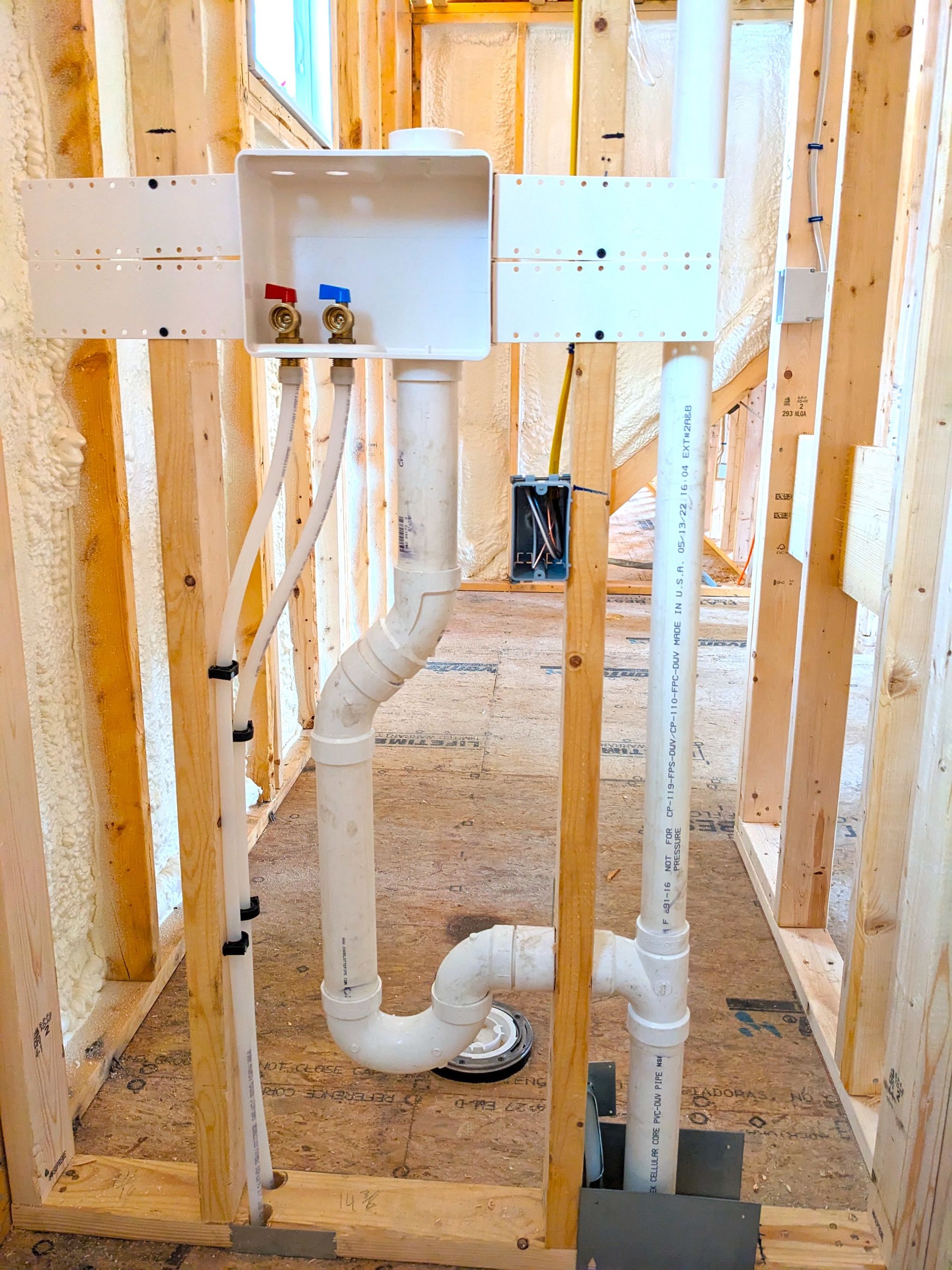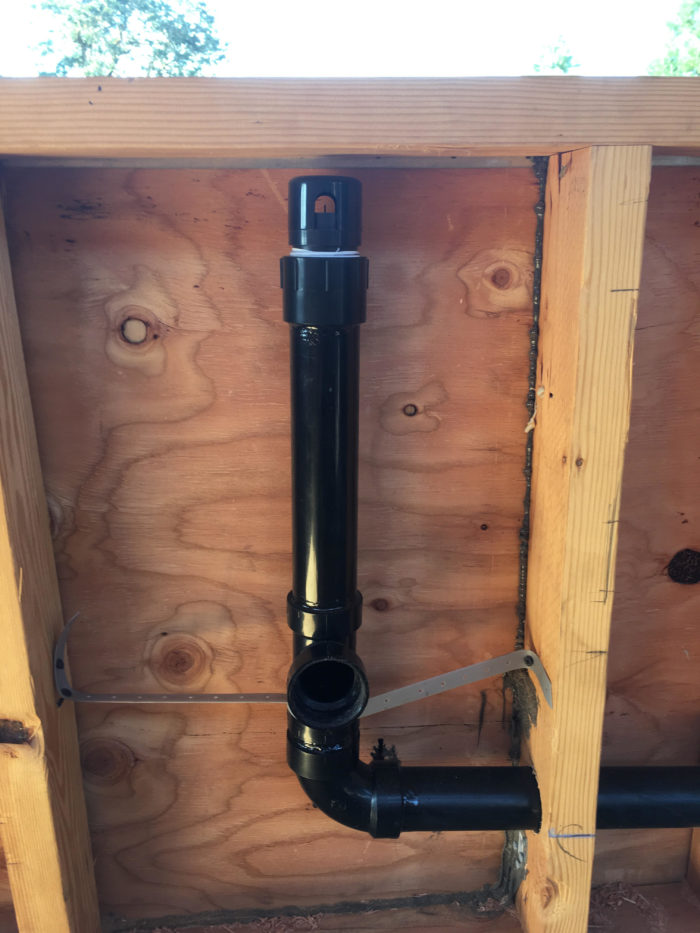Exploring The Importance of Adequate Ventilation in Plumbing Systems
Exploring The Importance of Adequate Ventilation in Plumbing Systems
Blog Article
Just how do you actually feel about Essential Plumbing Vent Pipes: Understanding Their Role?

Proper air flow in pipes systems is commonly neglected, yet it is essential for keeping the functionality and security of your home's plumbing. Ventilation helps manage air pressure, stop the build-up of dangerous gases, and ensure the effective elimination of waste. In this overview, we will certainly explore the significance of proper plumbing air flow, how it works, and the advantages it brings to your pipes system.
Recognizing Air Flow in Pipes
Ventilation in plumbing refers to the network of pipes that allow air to flow via the water drainage system. These vents offer several functions, consisting of managing air pressure within the pipelines, preventing sewer gases from entering the home, and assisting in the smooth circulation of wastewater.
Exactly How Ventilation Works in Pipes Equipments
Atmospheric Pressure Guideline
Proper air flow preserves well balanced atmospheric pressure within the plumbing system. When water moves with pipelines, it displaces air. Without appropriate air flow, this displacement can produce adverse pressure, bring about slow down drains or siphoning of water from catches, which can cause unpleasant smells to seep right into the home.
Avoiding Sewage System Gas Buildup
One of one of the most essential functions of pipes vents is to stop sewer gases, such as methane and hydrogen sulfide, from building up within the home. These gases can present major health and wellness threats and are very combustible. Vent pipelines permit these gases to get away securely outside.
Assisting in Waste Elimination
Air flow assists in the efficient elimination of wastewater by avoiding airlocks in the drainage system. When air can flow freely with the vents, it permits water and waste to move smoothly via the pipes, reducing the threat of clogs and back-ups.
Kinds Of Pipes Vents
Main Heap Vent
The primary stack air vent, also referred to as the air vent stack, is the main air vent in a plumbing system. It extends from the main drain line up with the roofing system, permitting gases to run away and fresh air to go into the system.
Branch Vent
Branch vents connect to the major stack vent and serve specific fixtures, such as sinks, toilets, and showers. These vents ensure that each component has sufficient air flow to work properly.
Air Admittance Shutoff (AAV).
An Air Admittance Shutoff (AAV) is a one-way shutoff that allows air to get in the pipes system without the requirement for a traditional air vent pipe expanding via the roof covering. AAVs are frequently made use of in restorations or areas where installing a typical vent is unwise.
Signs of Poor Ventilation in Plumbing.
Slow Draining Fixtures.
If your sinks, tubs, or bathrooms are draining pipes gradually, maybe an indicator of inadequate air flow. Inadequate air flow can create a vacuum impact, making it challenging for water to drain pipes effectively.
Gurgling Appears.
Gurgling sounds originating from drains are commonly a result of air being drawn via water traps as a result of adverse stress in the pipes. This is a clear sign of insufficient ventilation.
Undesirable Smells.
Sewer odors inside your home are a red flag that your plumbing system is not properly ventilated. This might suggest that sewer gases are not being effectively aired vent outside, bring about potentially hazardous conditions.
Common Ventilation Errors.
Insufficient Vent Sizing.
Utilizing undersized vent pipes can result in poor air flow and stress inequalities in the system. It's essential to make use of vents that meet the details needs of your plumbing system.
Improper Vent Placement.
Positioning vents as well far from the components they serve can reduce their efficiency. Proper placement ensures that air can flow openly and successfully with the system.
Ignoring Code Requirements.
Building regulations give certain guidelines for plumbing air flow. Overlooking these codes can result in a system that falls short to work correctly and might cause costly fixings or health hazards.
Advantages of Proper Air Flow.
Boosted System Effectiveness.
Appropriately aerated plumbing systems operate a lot more effectively, with less obstructions, faster draining pipes, and much less strain on the pipes. This performance prolongs the lifespan of the plumbing system.
Improved Air Quality.
By avoiding sewer gases from entering your home, appropriate ventilation contributes to far better interior air top quality, making your living environment healthier and much more comfy.
Stopping Water Damage.
Sufficient ventilation assists protect against water from being siphoned out of traps, which can lead to sewer gases entering the home and triggering water damage in time.
Steps to Make Certain Proper Ventilation.
Consulting Plumbing Codes.
Constantly seek advice from regional plumbing codes when making or modifying your pipes system. These codes offer the essential guidelines for appropriate airing vent and guarantee your system satisfies safety standards.
Normal Evaluation and Maintenance.
Routine examinations can help identify potential air flow concerns prior to they end up being significant issues. Upkeep tasks, such as cleaning air vent pipelines and looking for obstructions, are necessary for keeping the system in good working order.
Expert Installation.
For new installations or significant modifications, it's important to hire an expert plumbing professional. They have the know-how to ensure the ventilation system is properly developed and mounted according to code.
Verdict.
Correct air flow is a critical component of any pipes system, guaranteeing that it operates efficiently and securely. By recognizing the importance of air flow, identifying the indicators of bad air flow, and taking actions to preserve your system, you can stop expensive issues and protect your home's air top quality.
4 Things You Should Know About Your Plumbing Vents
What Plumbing Vents Are
Also called a vent stack, a plumbing vent is a vertical pipe attached to your drain line that runs through your roof. The plumbing vent pipe, or plumbing air vent, removes gas and odors from your plumbing system and allows fresh air to enter the pipes, helping the water to flow out of the drain pipes.
What Plumbing Vents Do
Plumbing vents have two basic functions. One of which is to allow unpleasant smelling wastewater and sewer gasses to escape your plumbing system instead of entering your home. Plumbing vent pipes are typically located on roofs, away from windows, to ensure the fumes exit the home completely.
The other function of the plumbing vent is to move fresh air into your plumbing system. This helps move water through every plumbing fixture in your house, like toilets and sink drains. Think of the way in which you need to let a little air into the bottle as you pour soda in order to make the drink flow smoothly.
Different Types of Plumbing Vents
True vent: This is the most common vent option. In simplest terms, a true vent is a vertical pipe attached to your drain line that exits through the roof. They often function as the main vent that other fixtures can connect to. Re-vent pipe or auxiliary vent: Attached to the drain line near specific plumbing fixtures, re-vent pipes run up and over to connect to the main vent. Common vent: Two plumbing fixtures installed on opposite sides of a wall are typically tied into the vent stack using something known as a sanitary cross. Wet vent: This venting option operates as a drain pipe and a vent at the same time. Wet vent drainage systems drain water from one fixture while venting the air from another. Although they’ve been used for over 100 years, wet vent systems have only recently been added to the plumbing code in many areas. If you’re planning on installing one in a bathroom remodel, make sure you check your local code prior to construction. Loop vent: For free-standing fixtures like kitchen island sinks, loop vents are ideal. These vent pipes run under the floor, rise from the P-trap, and create a loop inside the cabinet sink. Air admittance valve: An AAV is a one-way mechanical valve typically installed at the site of the plumbing fixture. AAVs allow venting to occur without having to tie into a larger venting system. They’re ideal for venting fixtures where you aren’t able to easily connect to an existing vent system. Common Plumbing Vent Issues
Although vent pipes typically don’t have water flowing through them, they’re still subject to many typical plumbing issues. For example, clogs are one of the most common problems associated with sewer vent pipes. If your vent pipe gets clogged, all of your plumbing fixtures tied into the vent stack will be affected.
A sink with a slow drain that bubbles and gurgles or a strong sewage smell around your toilet are both indicators that your toilet vent pipe is clogged. Because most vent pipes exit through the roof, old leaves, twigs or even a bird’s nest could be clogging the pipe.
Clogs in your vent pipe system cause a buildup of negative pressure, meaning that water won’t be able to flow out of your home very well. It’s similar to putting your finger over the opening of a straw to trap water inside. When you remove your finger, the water is able to flow out of the straw.
If you suspect you have any blockage in your vent, make sure you have a professional come examine the situation. Left unchecked, a blocked air vent can lead to other costly repairs, like leaks and sediment buildup.
Under Pressure
Pipe vents are essential aspects of a home’s plumbing system. Owning a home means learning about all sorts of things you never put much thought into before. But by understanding as much as you can about the important systems of your home, you can keep those budgets intact and those anxiety levels low.
https://www.homeserve.com/en-us/blog/home-improvement/plumbing-vents/

Do you enjoy reading about What Is A Plumbing Vent & How Do They Work?? Try to leave a comment down the page. We'd be delighted to see your opinion about this blog entry. We are looking forward to see you back again in the future. Do you know another individual who is excited about the topic? Why not share it. I am grateful for being here. Don't forget to check our blog back soon.
Call Today Report this page